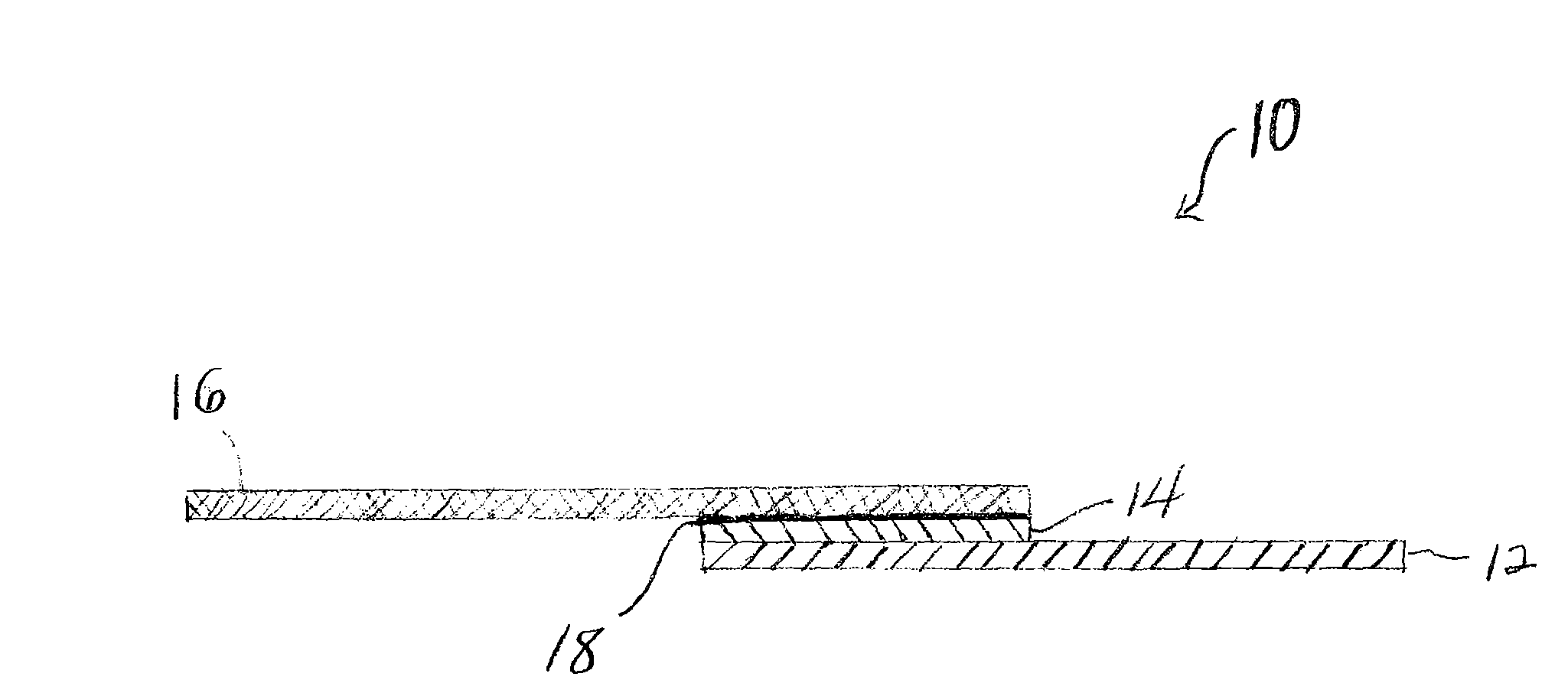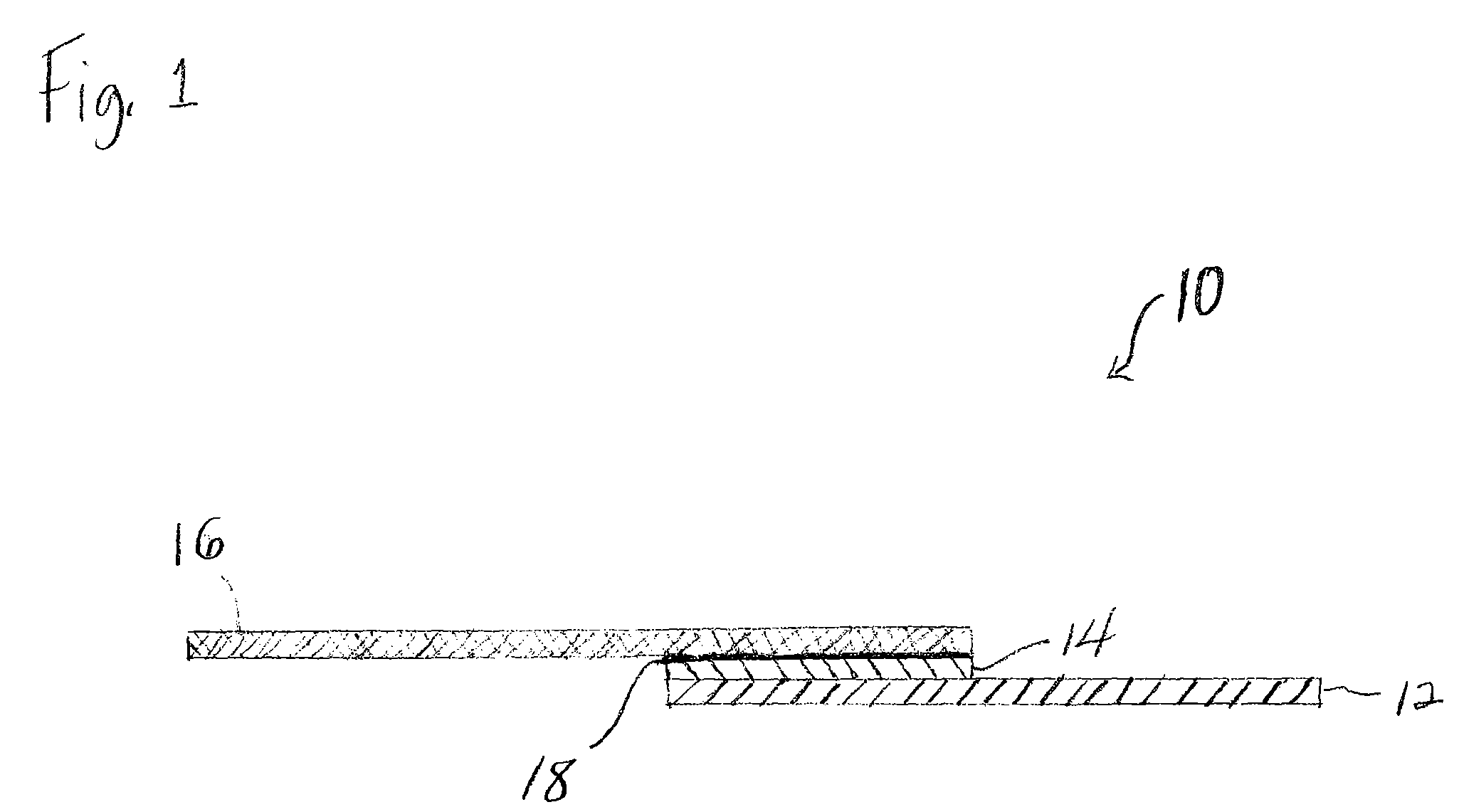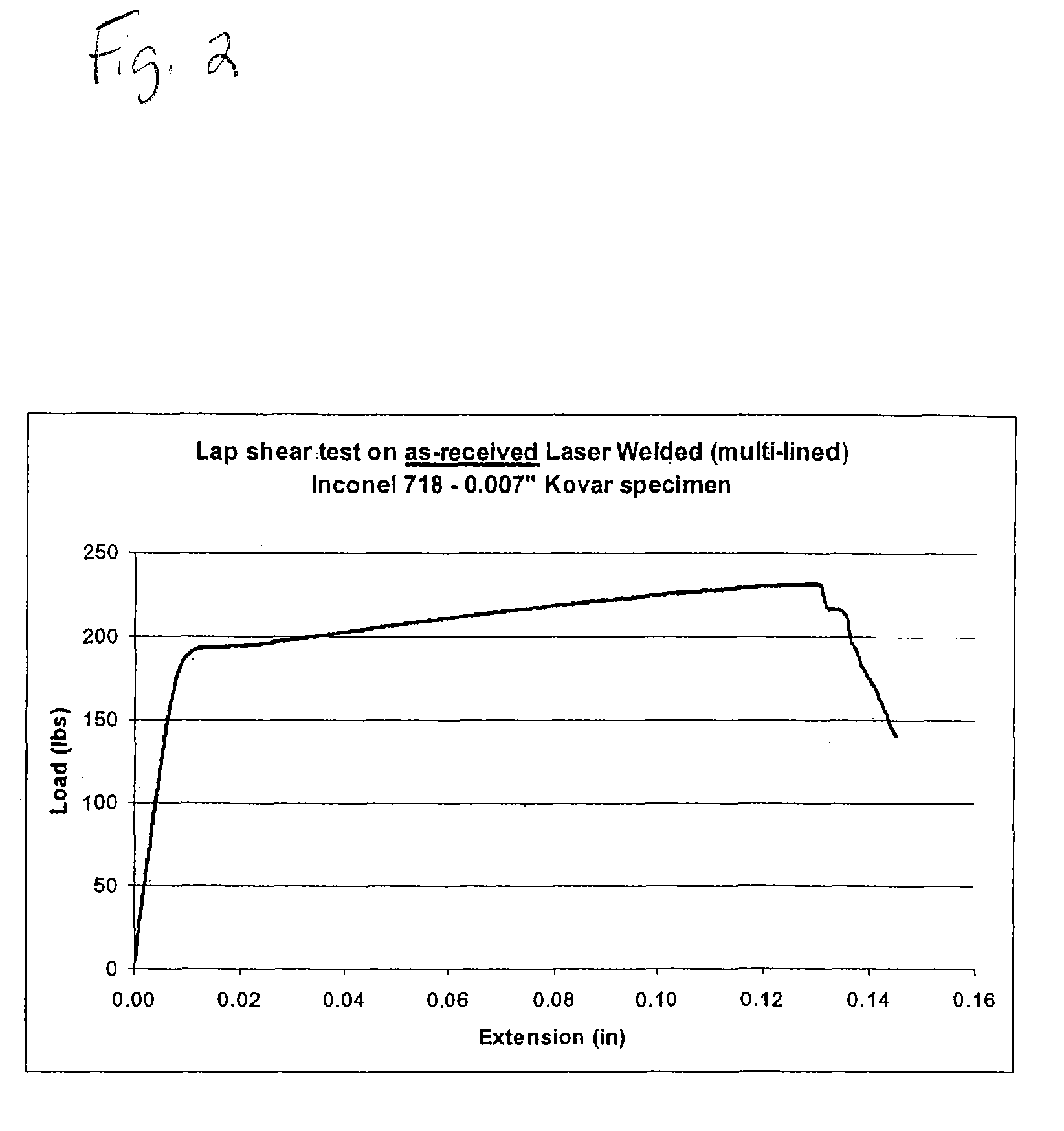Method of joining metals to ceramic matrix composites
a ceramic matrix and composite material technology, applied in the direction of paper/cardboard containers, soldering devices, manufacturing tools, etc., can solve the problems of limited commercial application and difficulty in reliably connecting these two materials, and achieve the effect of high strength bonding, convenient metal bonding, and high strength
- Summary
- Abstract
- Description
- Claims
- Application Information
AI Technical Summary
Benefits of technology
Problems solved by technology
Method used
Image
Examples
example 1
[0032]A machined bar of Inconel 718 and a 0.007 inch thick piece of Kovar (interlayer) were laser welded together to achieve a fully welded interlayer / metal structure. By “fully” welded, it is meant that multiple laser weld beads were used, in this instance, about 30. The quality of the welds was good.
[0033]In addition, 4-line welded Inconel 718 / Kovar test specimens were also fabricated. Tensile lap shear mechanical tests were performed on laser welded Inconel 718 / 0.007″ thick Kovar specimens. The results obtained on 4-line laser welded specimens are shown in FIG. 2. The results are positive in that the tensile lap shear specimens failed only via the actual yielding of the Kovar strip material without any indication of failure in the laser weld itself. Overall, the data demonstrates that the Kovar yielded before the failure of the welds, demonstrating that the welds are inherently stronger than the Kovar.
example 2
[0034]A SiC / SiC composite was joined to a laser welded Inconel 718 / Kovar subassembly using various braze materials including Incuro, Nioro, Nioro ABA, and Ticuni (manufactured by Morgan Advanced Ceramics / Wesgo, Hayward, Calif.). Several of the resulting joined components were tensile lap shear tested. The tensile lap shear test results shown in FIG. 3 were based on test specimen IN-4 which comprised an Inconel 718-laser welded Kovar / Incuro braze / SiC—SiC composite. The results showed that the resulting bond was very strong as it failed only after the application of about 750 pounds of load which corresponds to a bond strength of about 4250 psi.
[0035]These results demonstrate that the method of the present invention provides high strength joints between a superalloy having a high coefficient of thermal expansion (such as Inconel 718) and ceramic-based SiC—SiC composites having a low coefficient of thermal expansion.
PUM
| Property | Measurement | Unit |
|---|---|---|
| temperature | aaaaa | aaaaa |
| temperature | aaaaa | aaaaa |
| thick | aaaaa | aaaaa |
Abstract
Description
Claims
Application Information
 Login to View More
Login to View More - R&D
- Intellectual Property
- Life Sciences
- Materials
- Tech Scout
- Unparalleled Data Quality
- Higher Quality Content
- 60% Fewer Hallucinations
Browse by: Latest US Patents, China's latest patents, Technical Efficacy Thesaurus, Application Domain, Technology Topic, Popular Technical Reports.
© 2025 PatSnap. All rights reserved.Legal|Privacy policy|Modern Slavery Act Transparency Statement|Sitemap|About US| Contact US: help@patsnap.com



